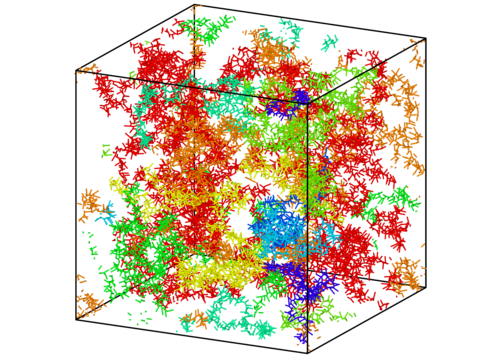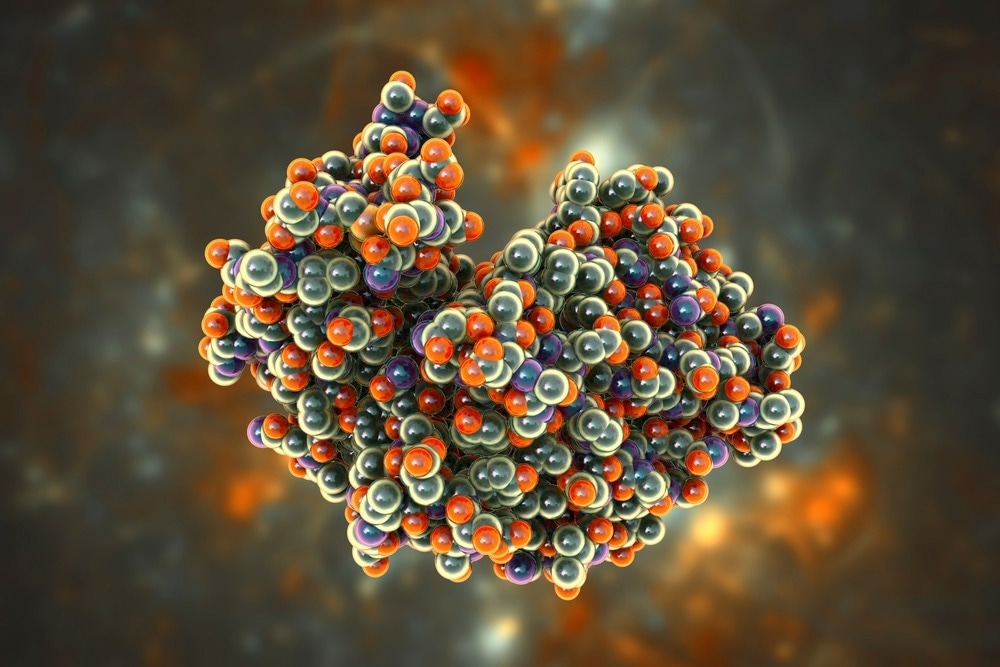Reviewed by Danielle Ellis, B.Sc.Sep 27 2022
Researchers from the University of Massachusetts Amherst recently reported in the Proceedings of the National Academy of Sciences that uniformly charged macromolecules, or molecules like proteins or DNA, which contain a large number of atoms all with the same electrical charge, can self-assemble into very large structures.
 Attraction between the dipoles of several macromolecules leads to their mesomorphic assemblies, in contrast with typical polyelectrolyte behavior. Image Credit: Shibananda Das
Attraction between the dipoles of several macromolecules leads to their mesomorphic assemblies, in contrast with typical polyelectrolyte behavior. Image Credit: Shibananda Das
This discovery has broad implications. This discovery challenges the way scientists conceive the structure of certain fundamental parts of life.
Charged polymer chains have traditionally been thought of by scientists as being made up of smaller, uniformly charged units. In water, these chains, known as polyelectrolytes, exhibit predictable self-organizational characteristics.

Image Credit: Kateryna Kon/Shutterstock.com
For example, they will repel one another since things with comparable charges do not like to be close to one another. When salt is added to water-containing polyelectrolytes, the electrical repulsion of the chained molecules is screened, causing the molecules to coil up.
The game is very different when you have dipoles.”
Murugappan Muthukumar, Study Senior Author and Wilmer D. Barrett Professor, Polymer Science and Engineering, University of Massachusetts Amherst
Dipoles carry both positive and negative charges, unlike many other compounds. As a result, dipole-based polymers act very differently from the more well-known polyelectrolytes, which can have either a positive or negative electrical charge.
They expand in a salty solution and can cross-link with other dipole-based polymer chains to build complex polymer structures.
Dipoles can make polyelectrolytes behave more like polyzwitterions, which exhibit an ‘anti-polyelectrolyte effect.’ This effect is also a feature of the traditional chemical polyzwitterions, whose dipoles are made of chemical bonds.”
Di Jia, Study Lead Author and Former Postdoctoral Researcher, University of Massachusetts Amherst
Jia added, “Therefore, for physical polyzwitterion in dilute solutions, the polymer size increases with increasing ionic strength, exhibiting a globule-to-coil transition due to the intra-chain dipole interactions.”
Dipolar polymers can create intricate, self-regulating structures that can be used for anything from drug delivery systems to the development of new polymers.
“We theorize that these dipolar forces in charged macromolecules play a significant role in almost all biological assembly processes, such as the spontaneous birth of membraneless organelles,” stated Muthukumar.
Furthermore, the polymers made of dipoles show mesomorphism, an “in-between” state. In the mesomorphic state, the polymers are gathered into large, stable, homogeneous structures with the capacity to “self-poison,” or disintegrate. They are neither extensively scattered nor tightly coiled.
Muthukumar concluded, “The significance of the discovery that dipoles drive the assembly of polymers is immense because it throws new light on one of the fundamental mysteries of life’s processes, or how biological materials know how to self-assemble into coherent, stable structures. The theory changes the paradigm of how we think about these systems and highlights the unacknowledged role that dipoles play in the self-assembly of biological materials.”
Source:
Journal reference:
Jia, D., et al. (2022). Dipole-driven interlude of mesomorphism in polyelectrolyte solutions. PNAS. doi.org/10.1073/pnas.2204163119